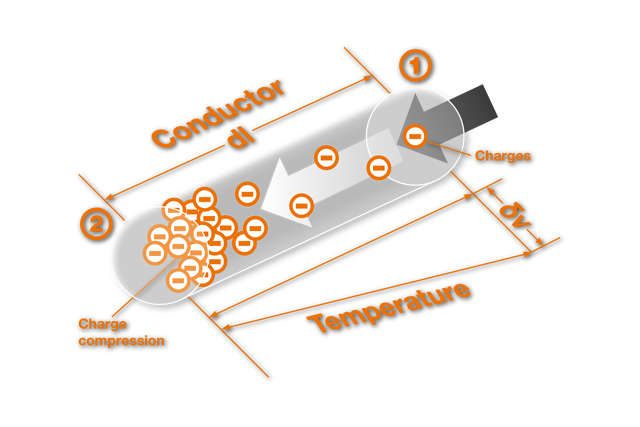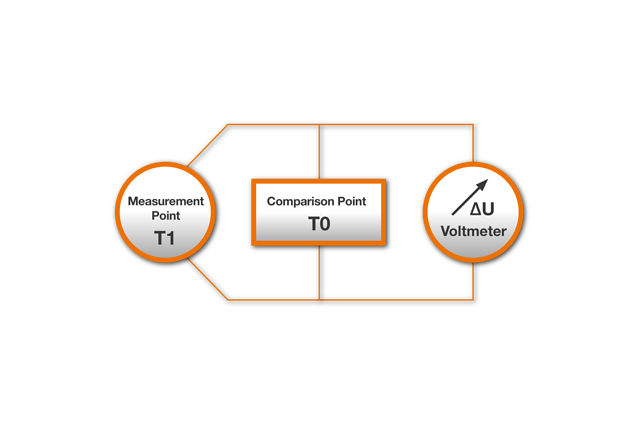Technical Information
1. Structure and function mode
Thomas Johann Seebeck discovered the thermoelectric effect in the year 1821: when one connects two wires of different materials one can measure a voltage at their free ends, if the junction is at a different temperature than the free ends.
The temperature difference between the temperature at the junction and the temperature at the connections (clamps) of the measuring instrument is always measured.
According to newer findings this effect is based on a material-specific characteristic of electrically conductive materials. Inside a conductor a shift of the electron density adjusts itself (volume diffusion effect), when through the conductor a temperature change (rise or fall) exists. Mathematically this change is called a temperature gradient. At the hot end due to the higher kinetic energy a depletion occurs, and at the cold end an enhancement of the charge carrier. Each conductor element is a voltage source on it’s own.
Each wire bit dl contributes corresponding to its temperature gradient dl/ dd and its material coefficient s a partial voltage . The total voltage over the wire results from the sum of the partial voltages, which forms itself from one end of the wire (1- hot spot) to the other (2 -cold spot).
The arrangement with two wires connected in different ways e.g., welds, solders or twists are called thermocouples. Only the difference of the voltage sums in the wires of different material results in a measurable voltage, which is a gauge of the temperature difference between the junction and the clamps of the measuring instrument. If one were to use two wires of the same material, the same voltage sum would result in each wire and one could measure no differential voltage.
With the connection of two thermoelectric wires one does not therefore reach the thermoelectric voltage effect, but instead one connects only the positive terminals of two batteries and measures the voltage difference of these batteries. The thermoelectric voltage, as a function of the temperature, is in the long run, nothing different than the temperature-dependent difference of these two batteries. Depending upon material combination, a reproducible dependence of the thermovoltage on the temperature difference between inserted temperature and cold junction results.
By means of the thermovoltage (mV) from the tables of the DIN EN 60584-1 and the consideration of the cold junctions temperature, it is thus easily possible to determine the temperature T1.
In practice the cold junction is contained either in the transmitter or in the control.
The ambient temperature existing there is permanently collected and by means of the formula
T1 = mV - (mVT0)
included in the calculation.
Choose your language
Leave your number and we’ll call you back
Your direct contact to our team
GÜNTHER GmbH
Temperaturmesstechnik
Bauhofstraße 12
D-90571 Schwaig
info@guenther.eu
Tel. +49 (0)911 / 50 69 95-0
Fax +49 (0)911 / 50 69 95-55













